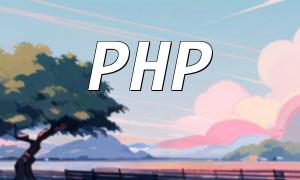With the continuous development of PHP, more and more developers are focusing on writing and using PHP extensions. C++, as a powerful programming language, provides more functionality and performance optimizations, which is why many developers choose C++ to write PHP extensions. This article will guide you step by step on how to create a PHP extension based on C++ from scratch, providing detailed code examples.
Before we begin, it's important to understand what a PHP extension is and its purpose. A PHP extension is a code library written to add new features and functionality to PHP’s core. By writing an extension, you can directly extend PHP’s capabilities without modifying its source code. PHP extensions can be written in either C or C++, with C++ providing greater flexibility and power.
Before you start writing a C++ PHP extension, you need to set up your development environment. The steps are as follows:
Next, we will create a basic C++ PHP extension and add some simple functionality. Below is a sample extension code, and we will explain each part in detail:
#include "php.h"
#define PHP_MY_EXTENSION_EXTNAME "my_extension"
#define PHP_MY_EXTENSION_VERSION "1.0"
zend_module_entry my_extension_module_entry = {
STANDARD_MODULE_HEADER,
PHP_MY_EXTENSION_EXTNAME,
NULL,
NULL,
NULL,
NULL,
NULL,
NULL,
NULL,
PHP_MY_EXTENSION_VERSION,
STANDARD_MODULE_PROPERTIES
};
PHP_MINIT_FUNCTION(my_extension) {
return SUCCESS;
}
PHP_MSHUTDOWN_FUNCTION(my_extension) {
return SUCCESS;
}
PHP_RINIT_FUNCTION(my_extension) {
return SUCCESS;
}
PHP_RSHUTDOWN_FUNCTION(my_extension) {
return SUCCESS;
}
PHP_FUNCTION(my_extension_hello) {
php_printf("Hello World!");
}
zend_function_entry my_extension_functions[] = {
PHP_FE(my_extension_hello, NULL),
{NULL, NULL, NULL}
};
PHP_MINFO_FUNCTION(my_extension) {
php_info_print_table_start();
php_info_print_table_row(2, "my_extension support", "enabled");
php_info_print_table_end();
}
zend_module_entry *get_module() {
return &my_extension_module_entry;
}
extern "C" {
ZEND_GET_MODULE(my_extension)
}This code includes the basic structure of the extension, module initialization, request handling functions, etc. Each part is explained in detail via comments.
After completing the code, you need to compile and install the extension. The steps are as follows:
phpize
./configure --enable-my_extension
make
make install<span class="fun">extension=my_extension.so</span>
Here’s a simple PHP code example demonstrating how to use the extension we created:
<?php
my_extension_hello();
?>When you run the code, you should see the output "Hello World!".
Through the introduction and code examples provided in this article, you should now have a good understanding of how to create a PHP extension using C++ and how to compile and install it. It’s important to note that this article is just a simple example, and there’s much more to PHP extension development, including topics like memory management, exception handling, and object-oriented programming. We hope this article helps you get started with PHP extension development and inspires you to explore more complex extensions using C++.









